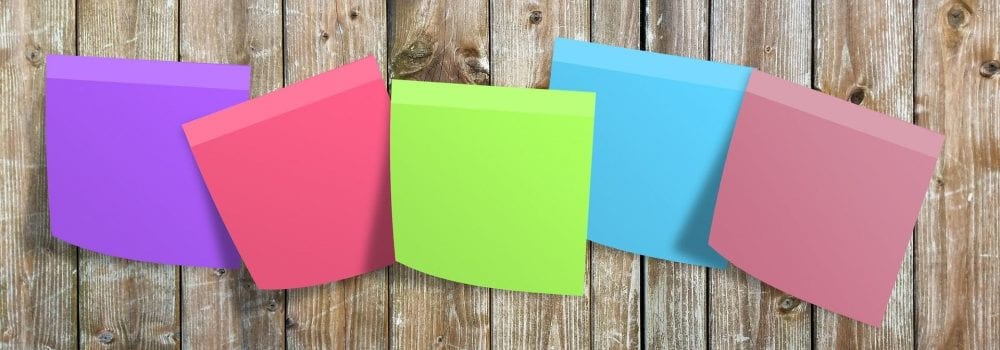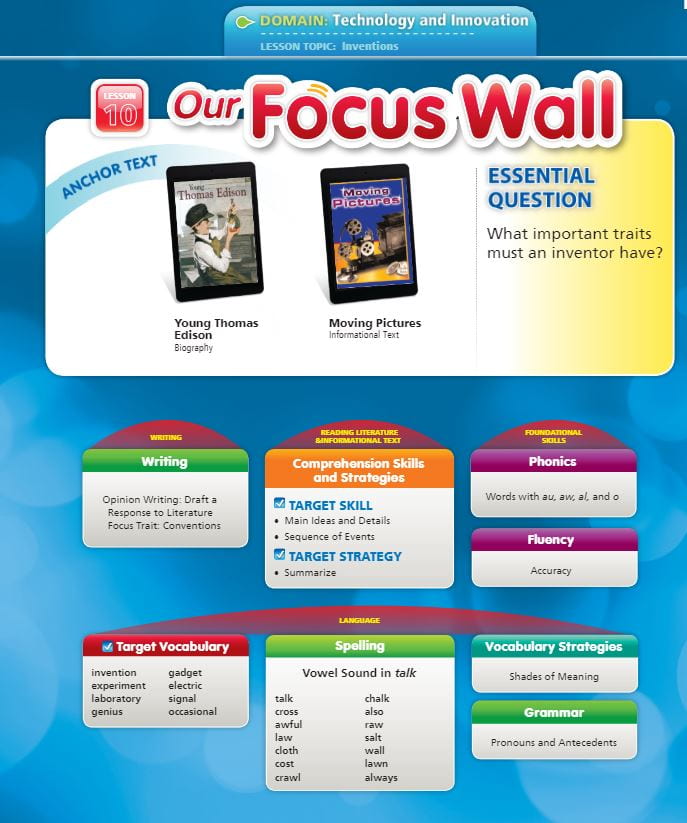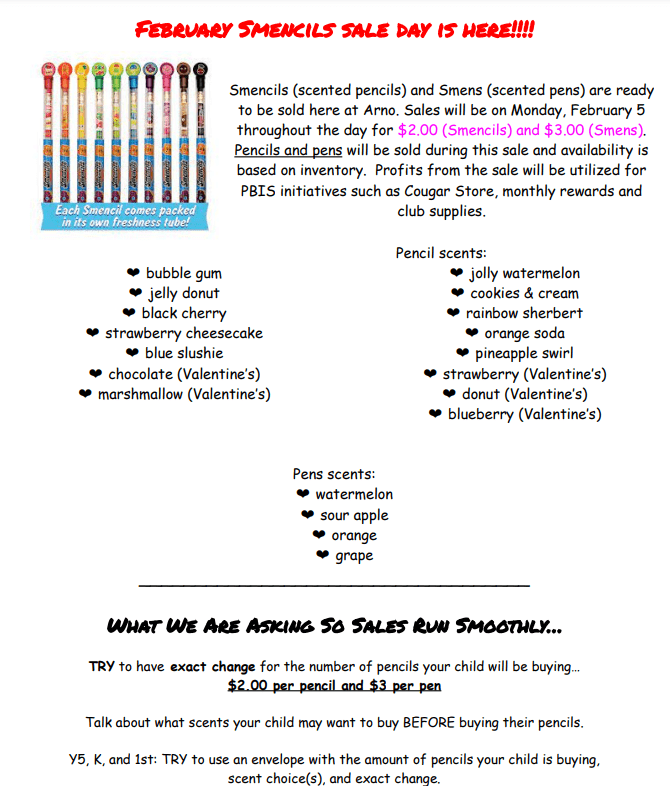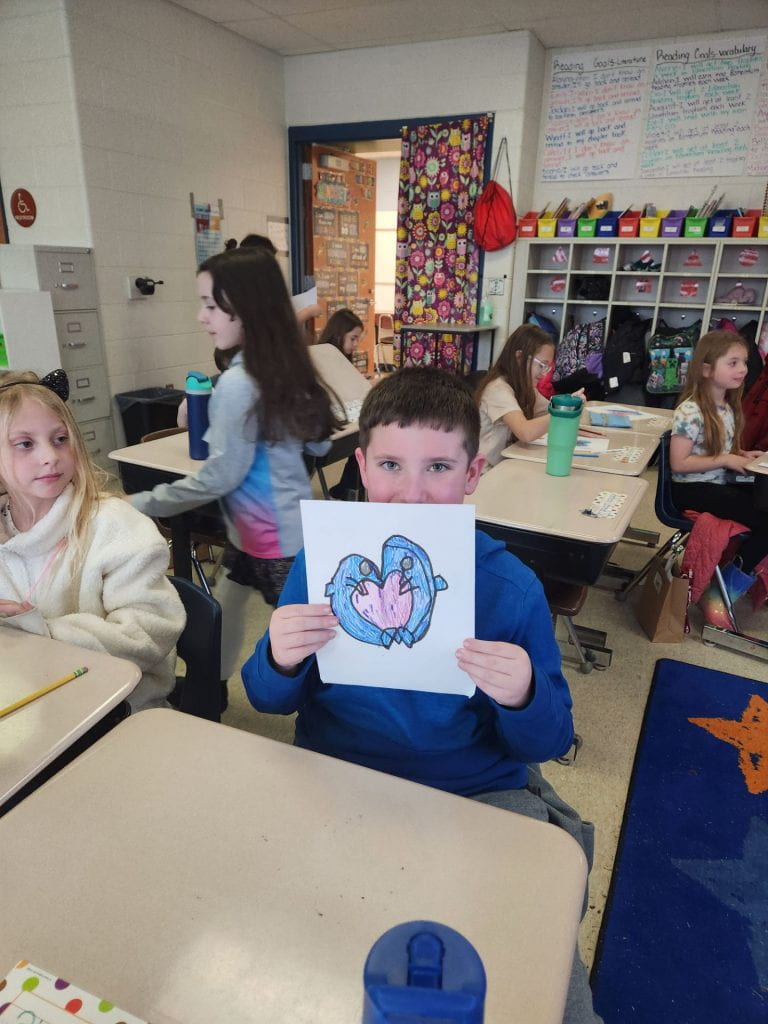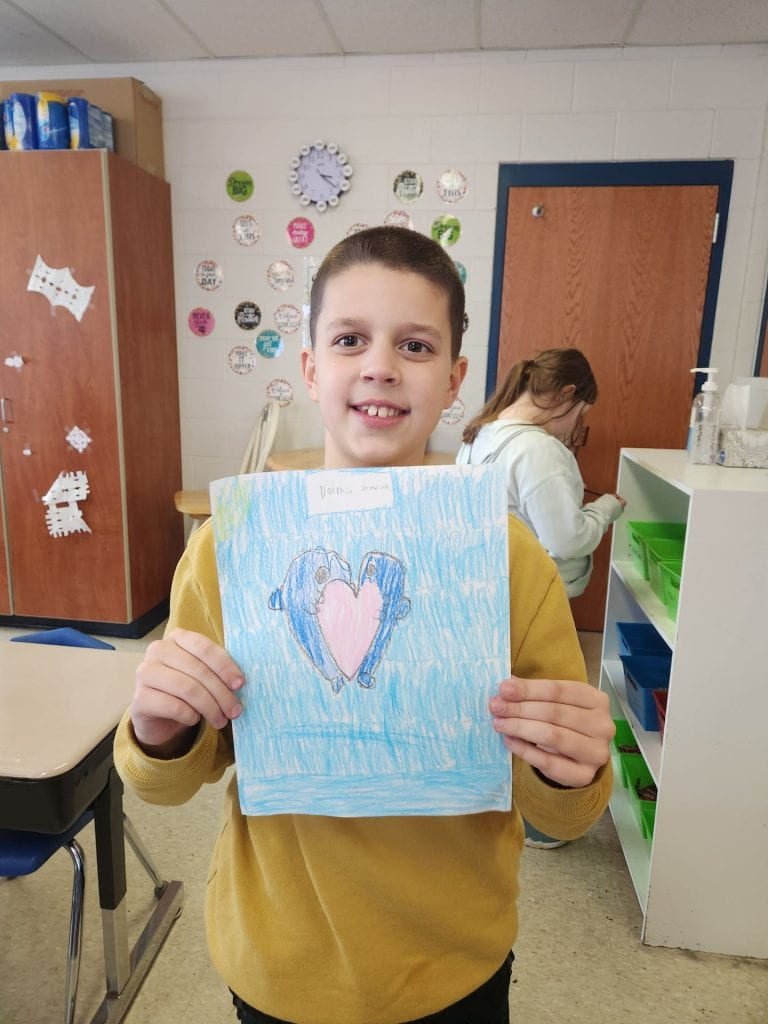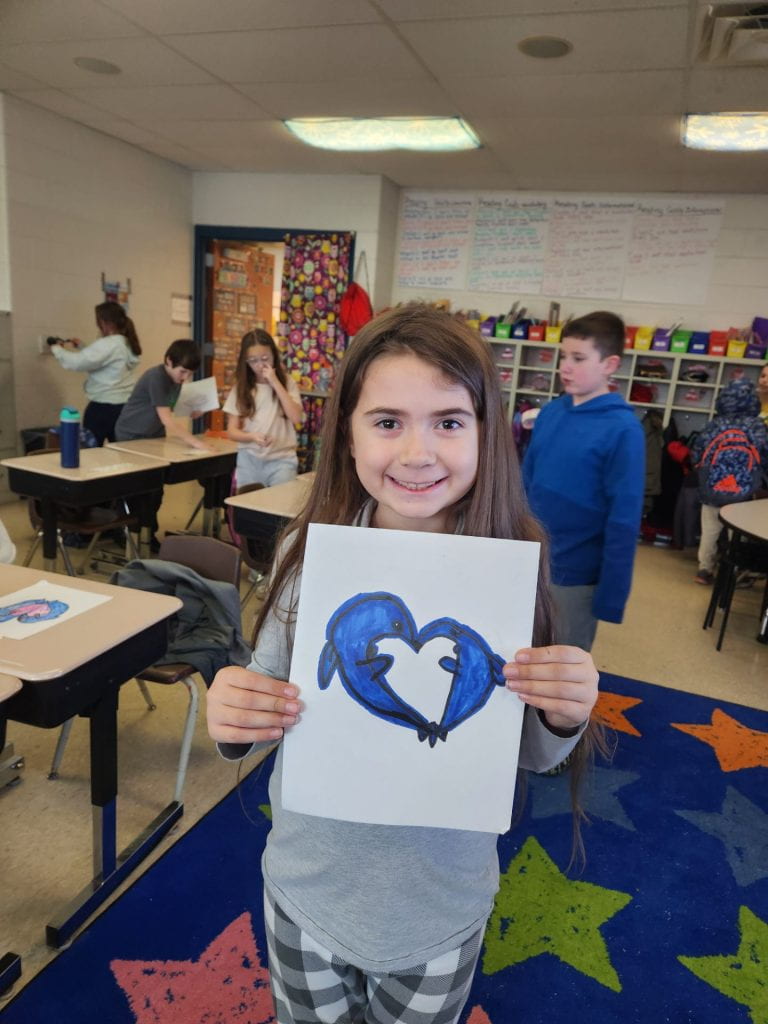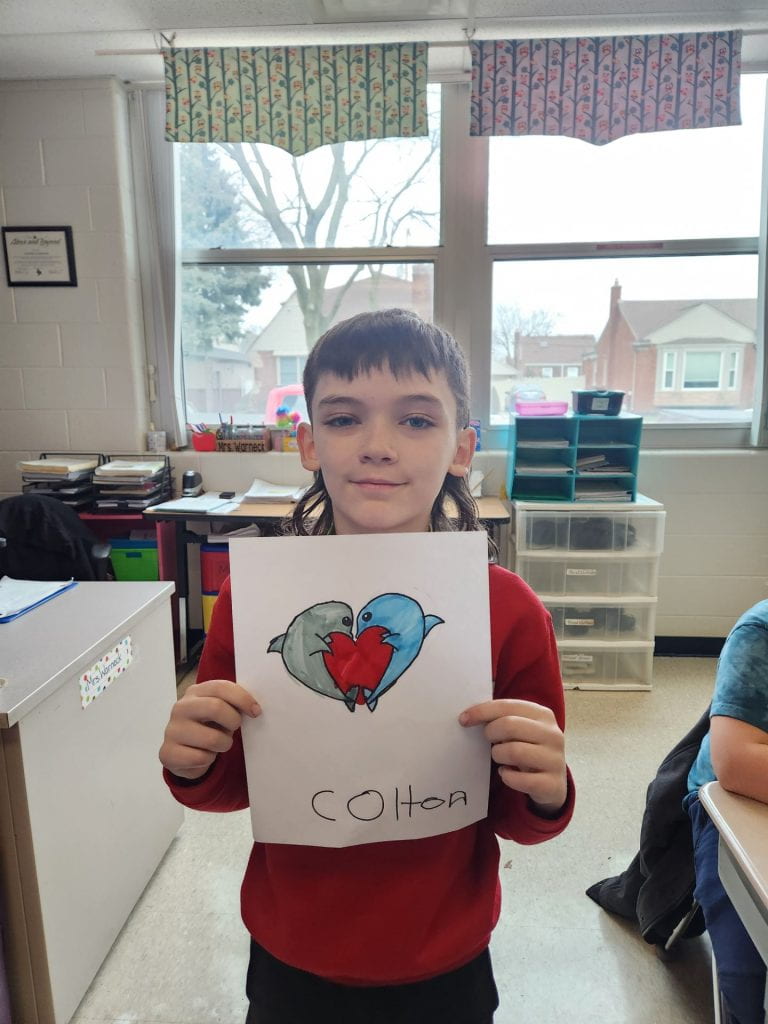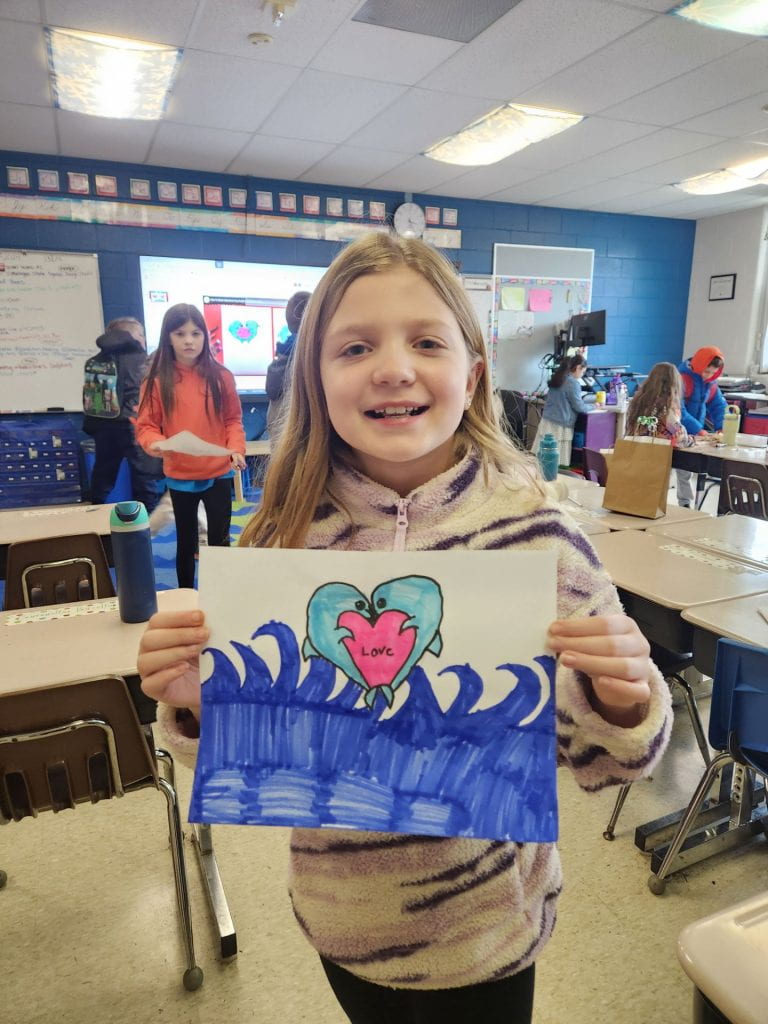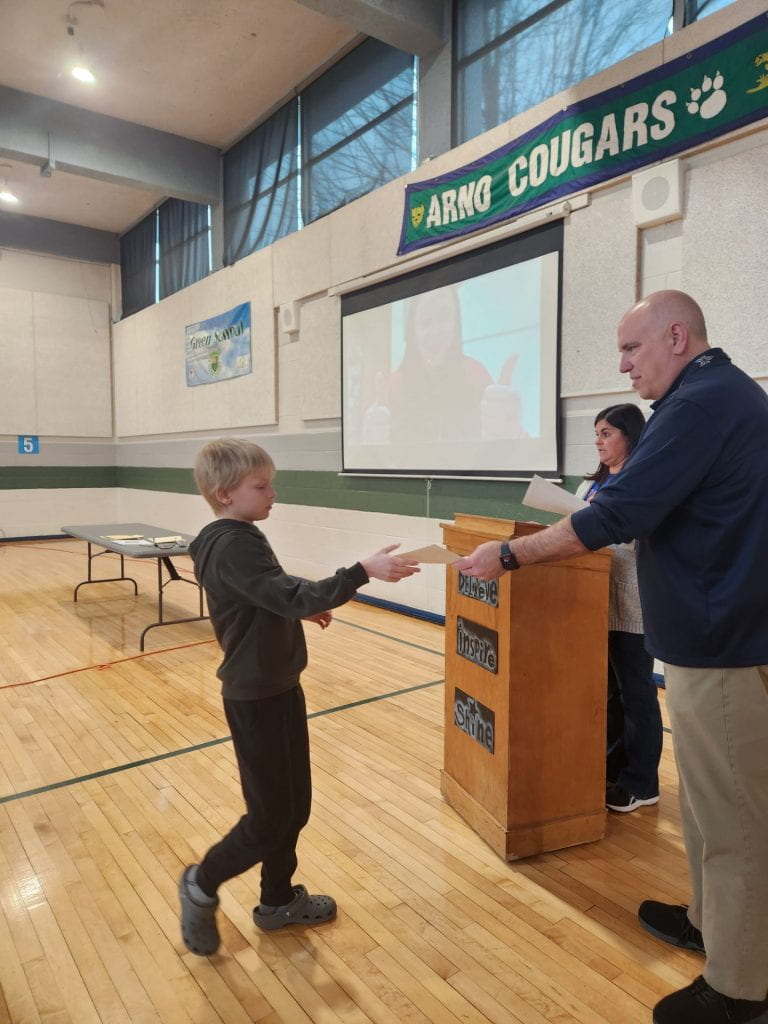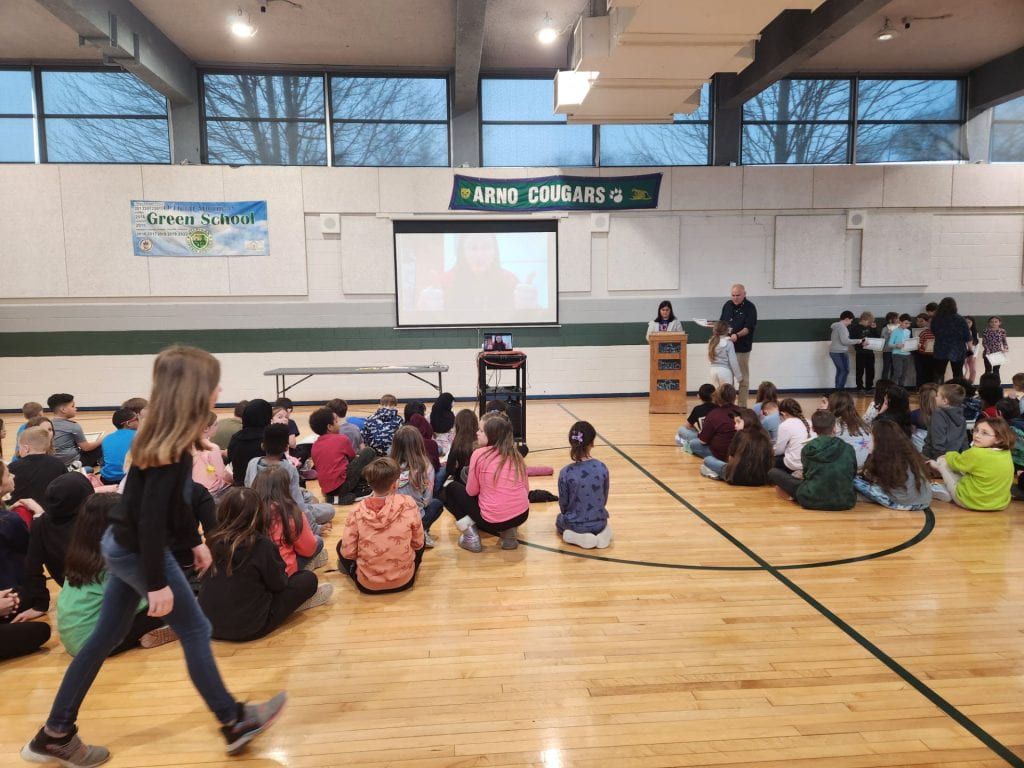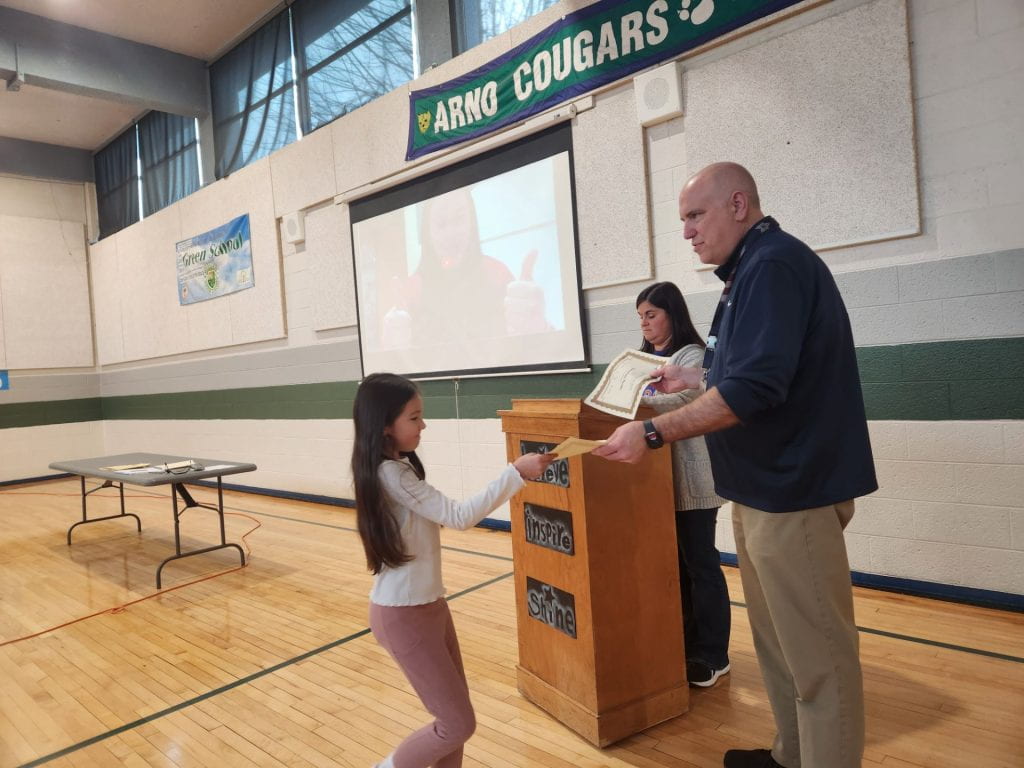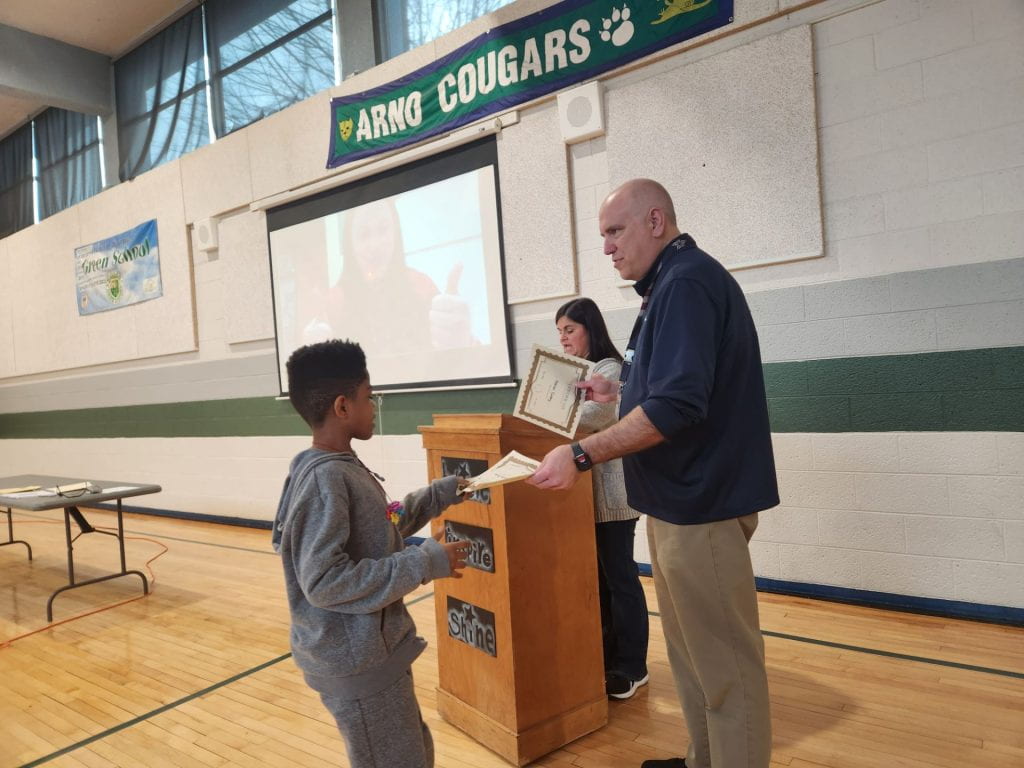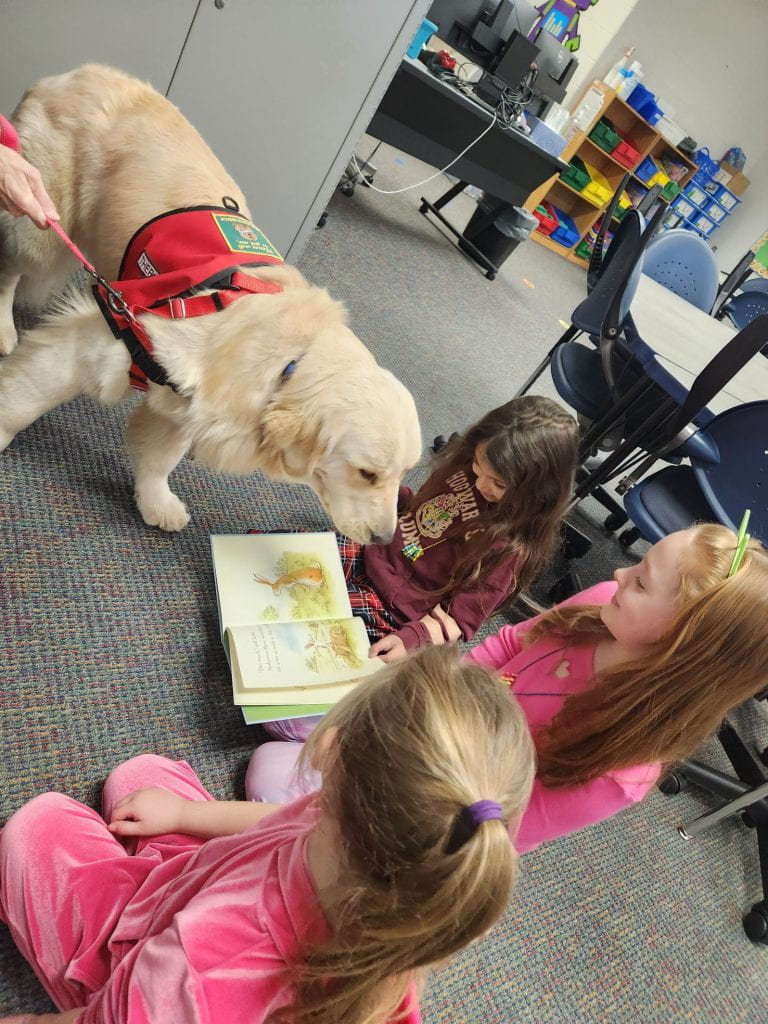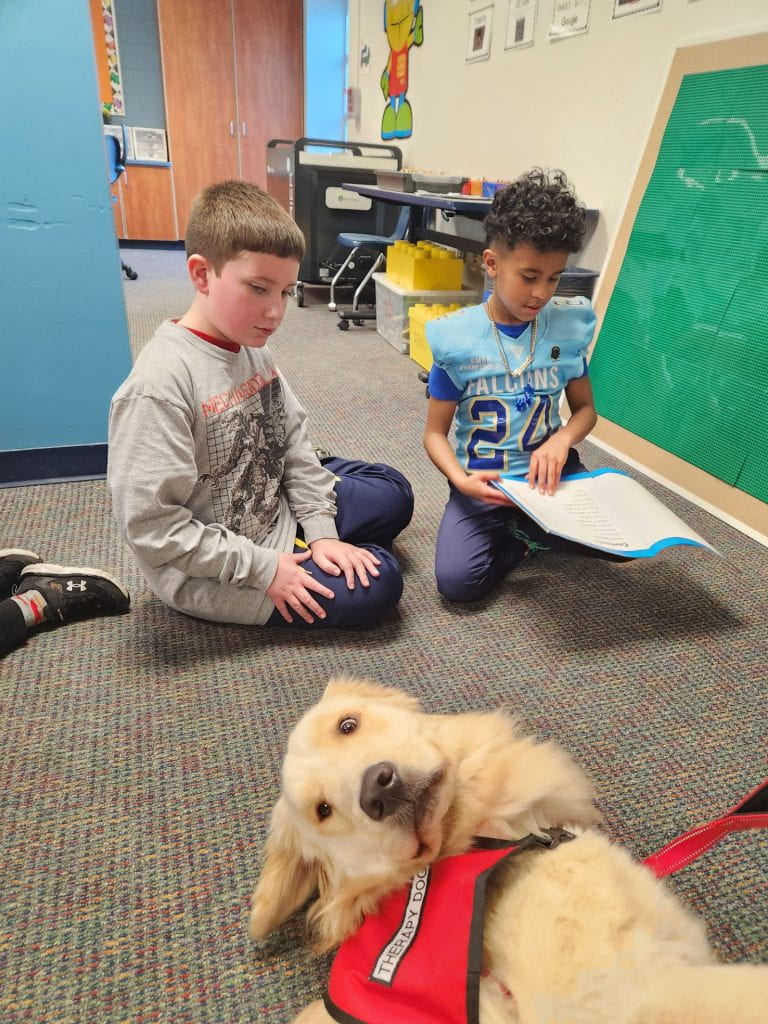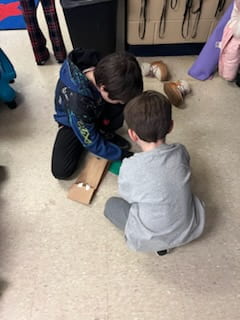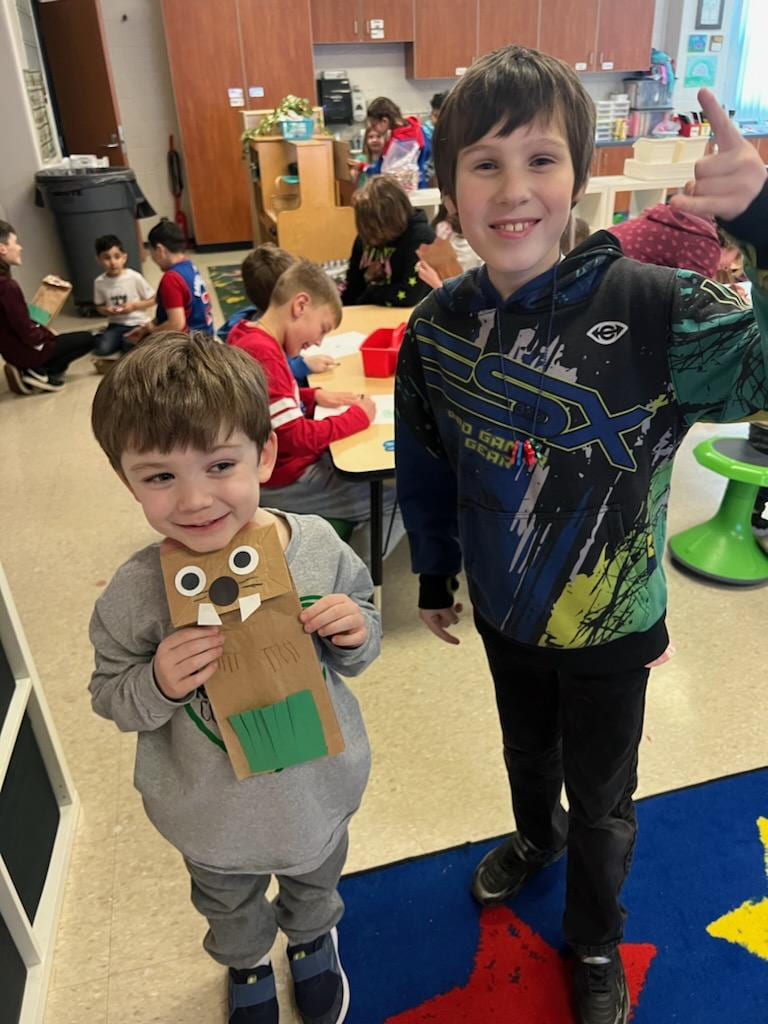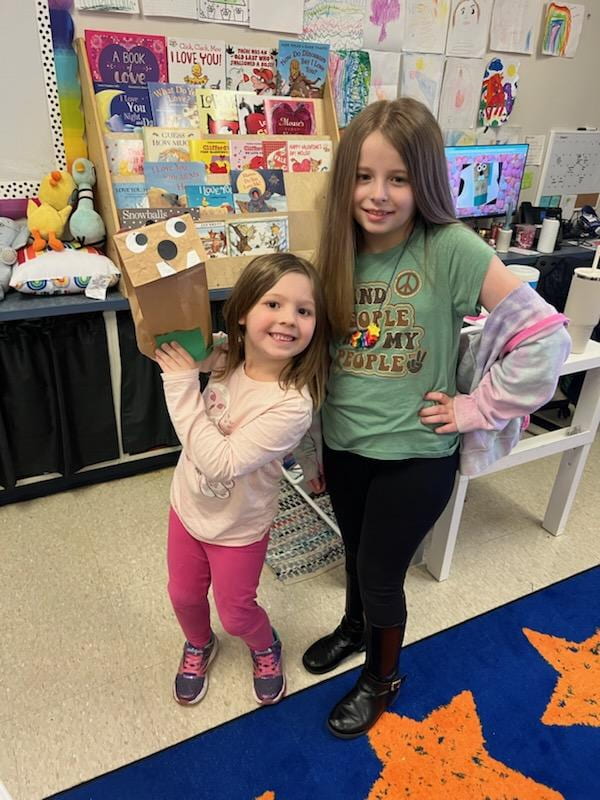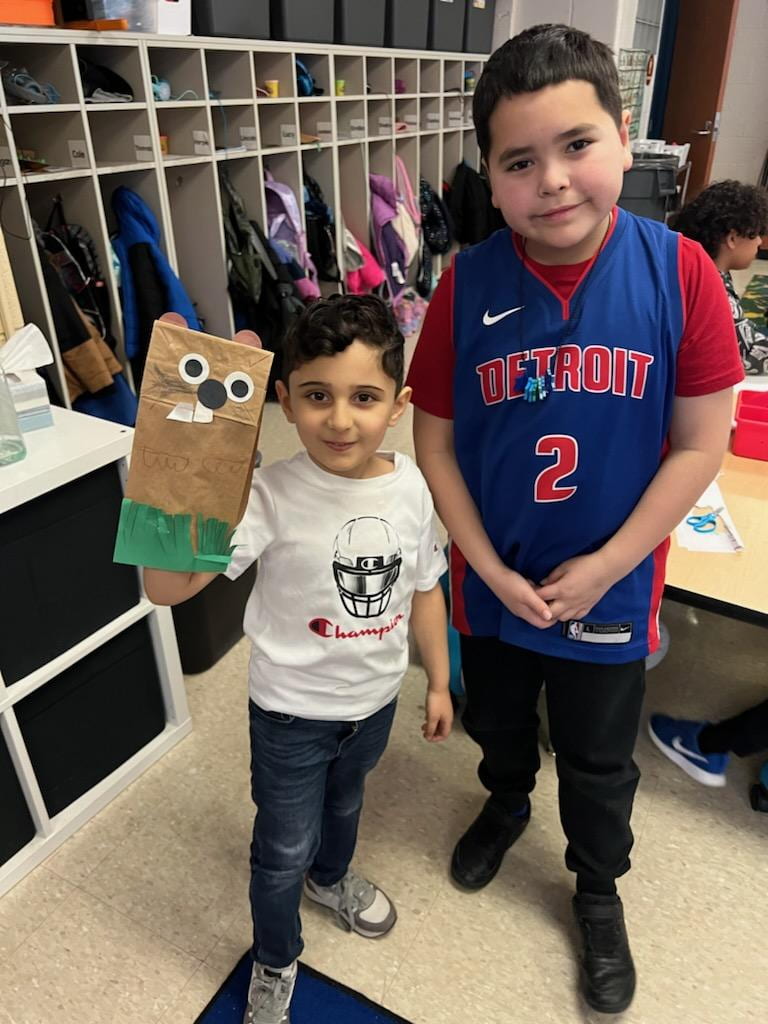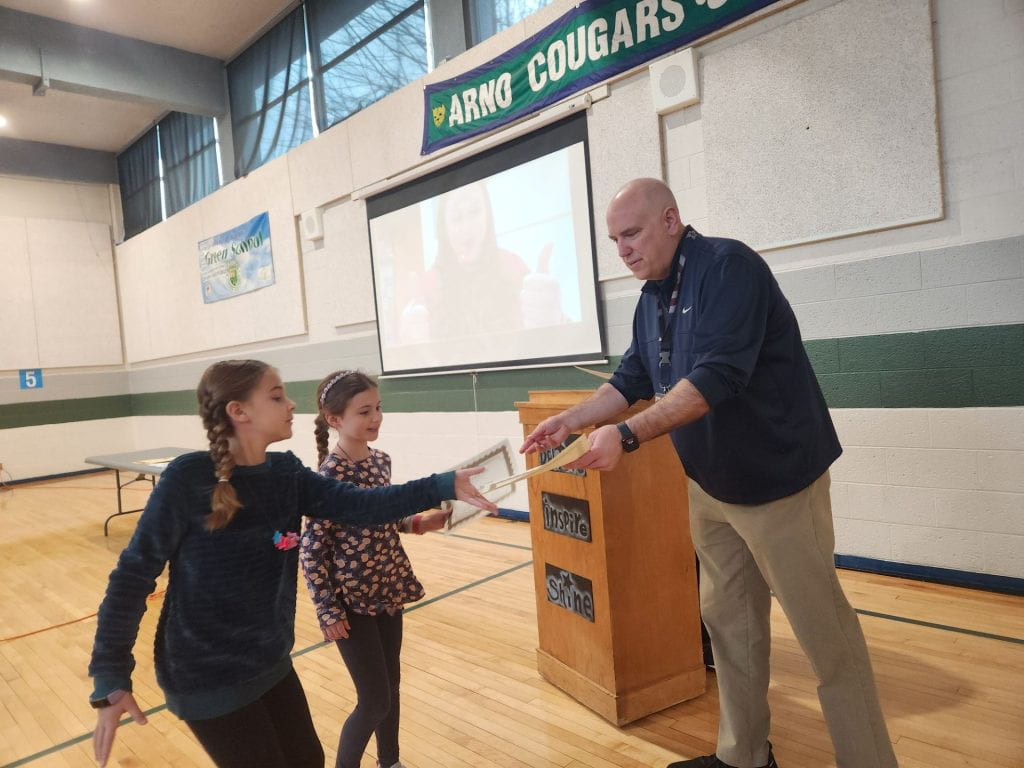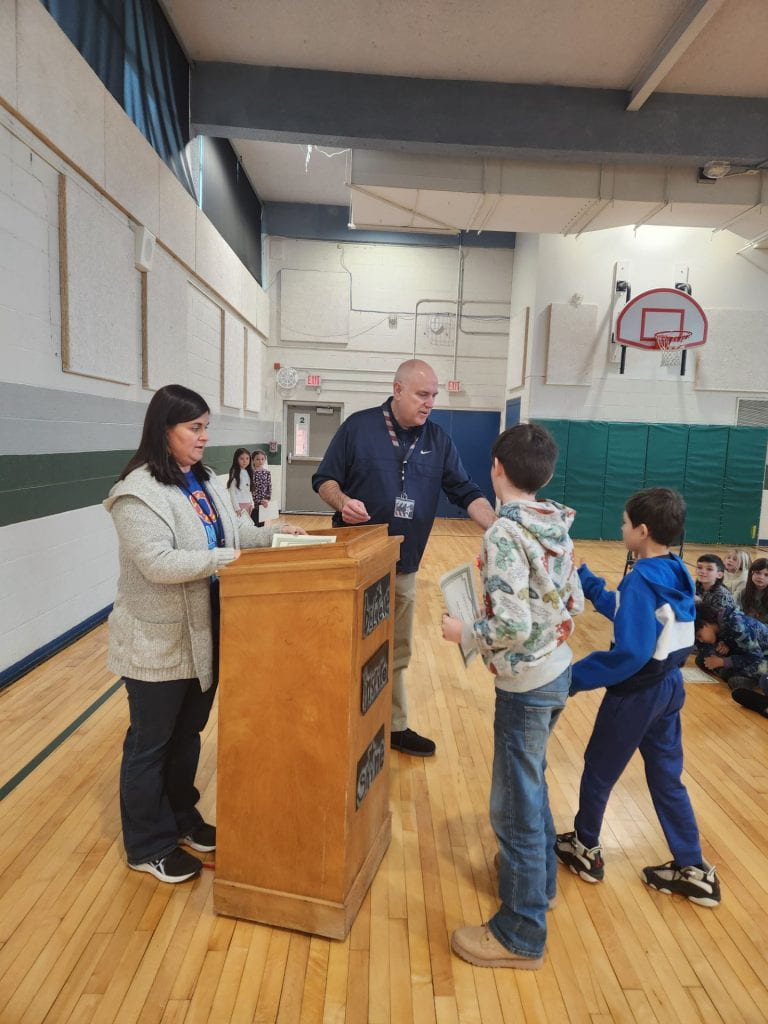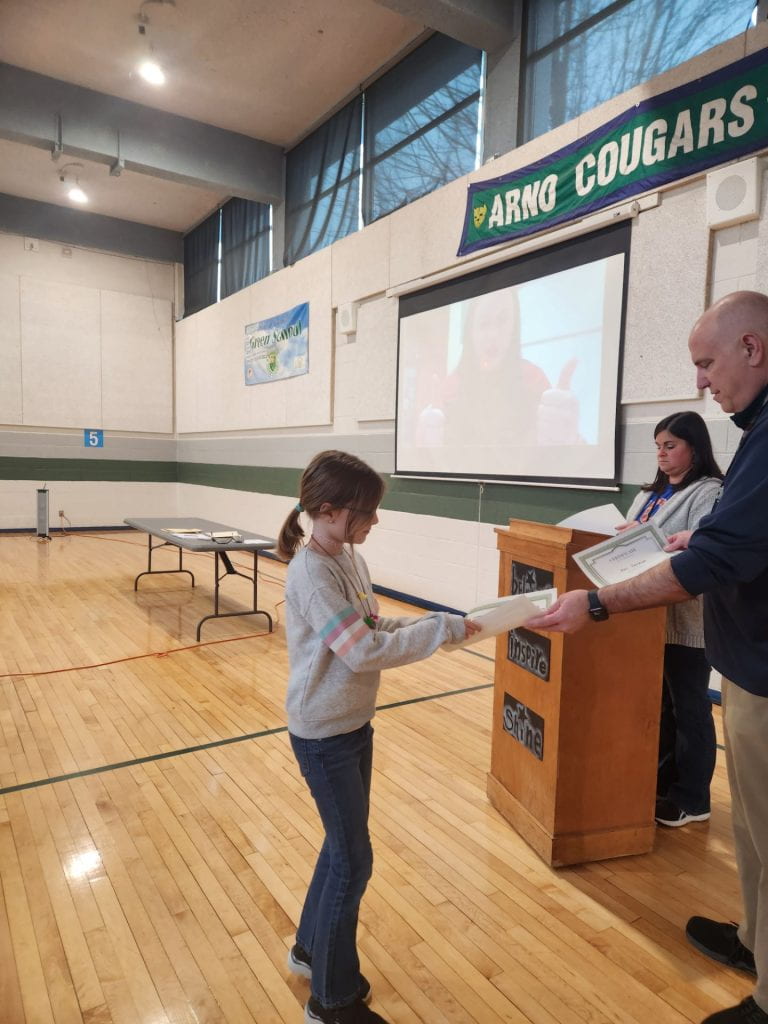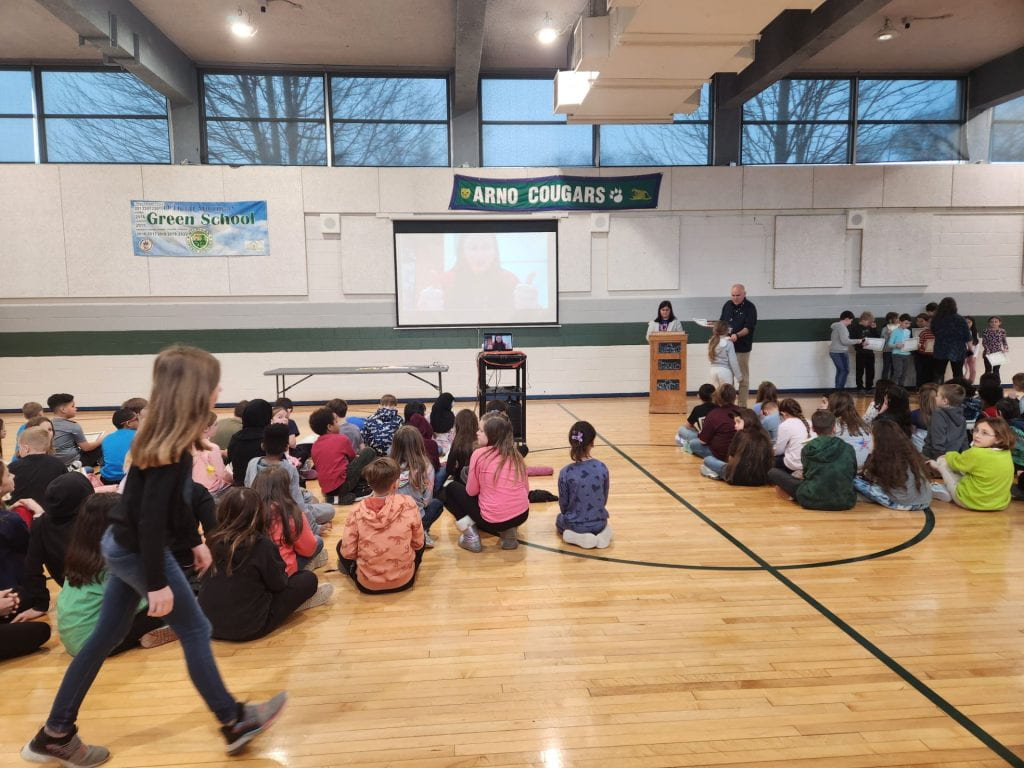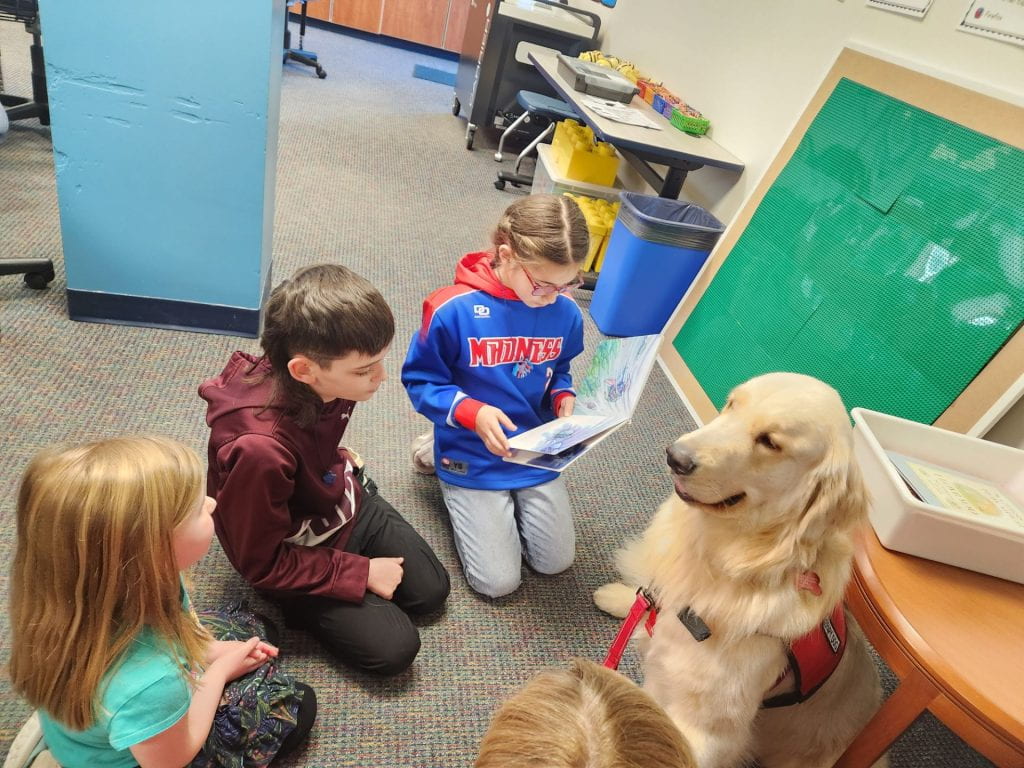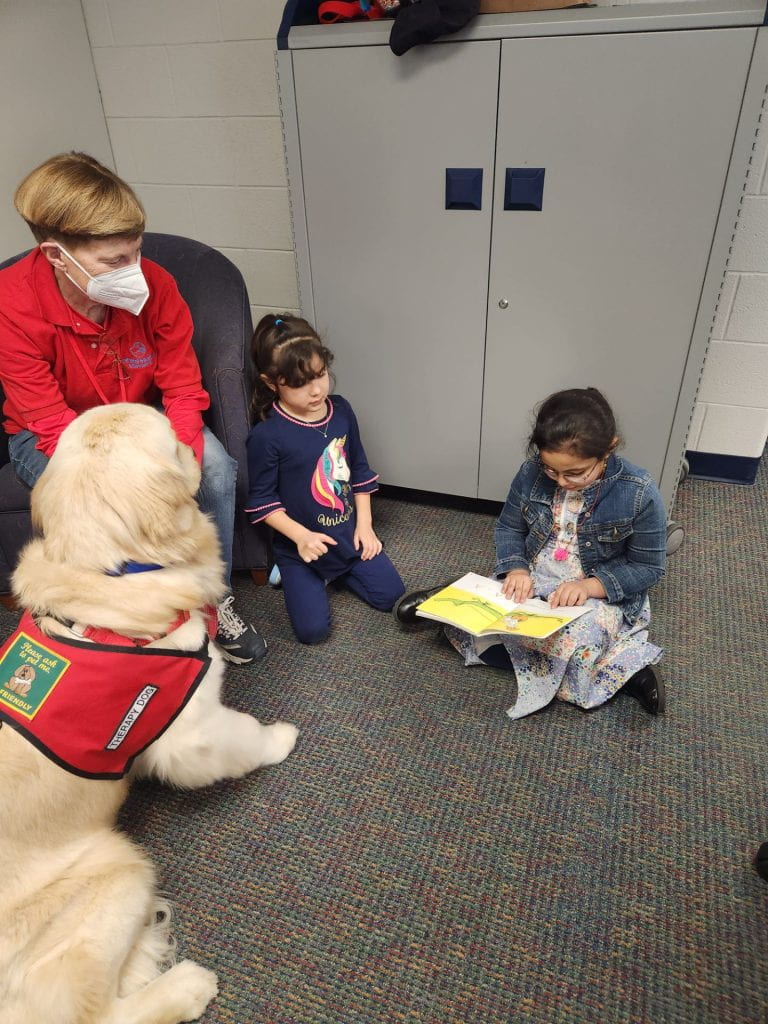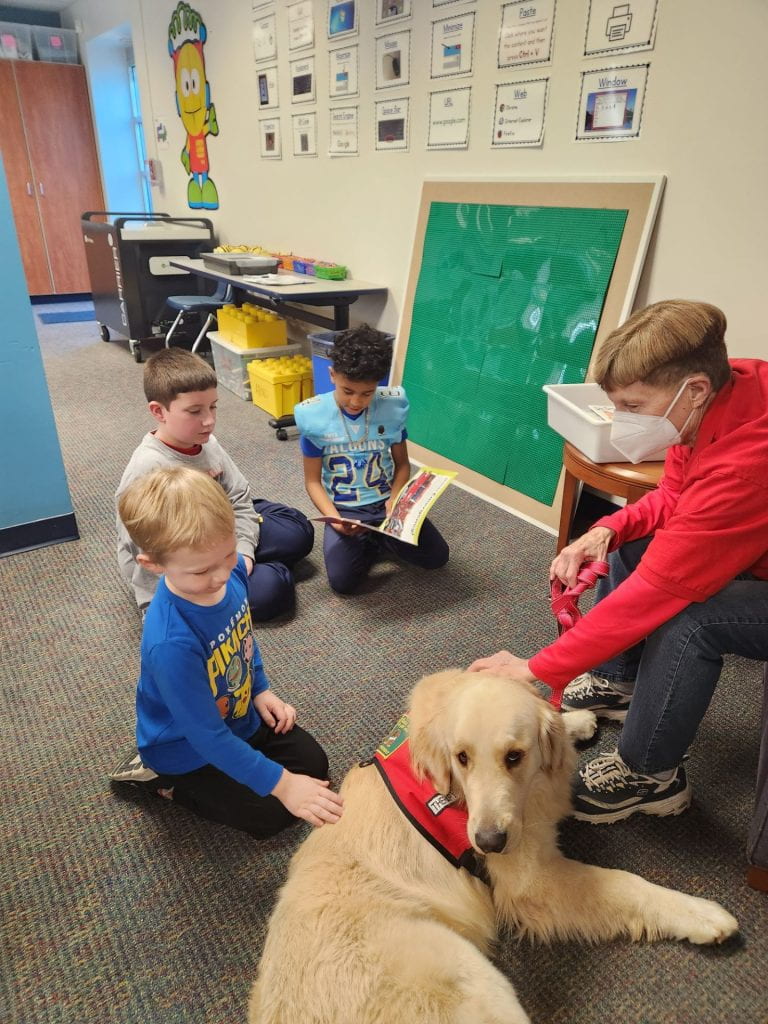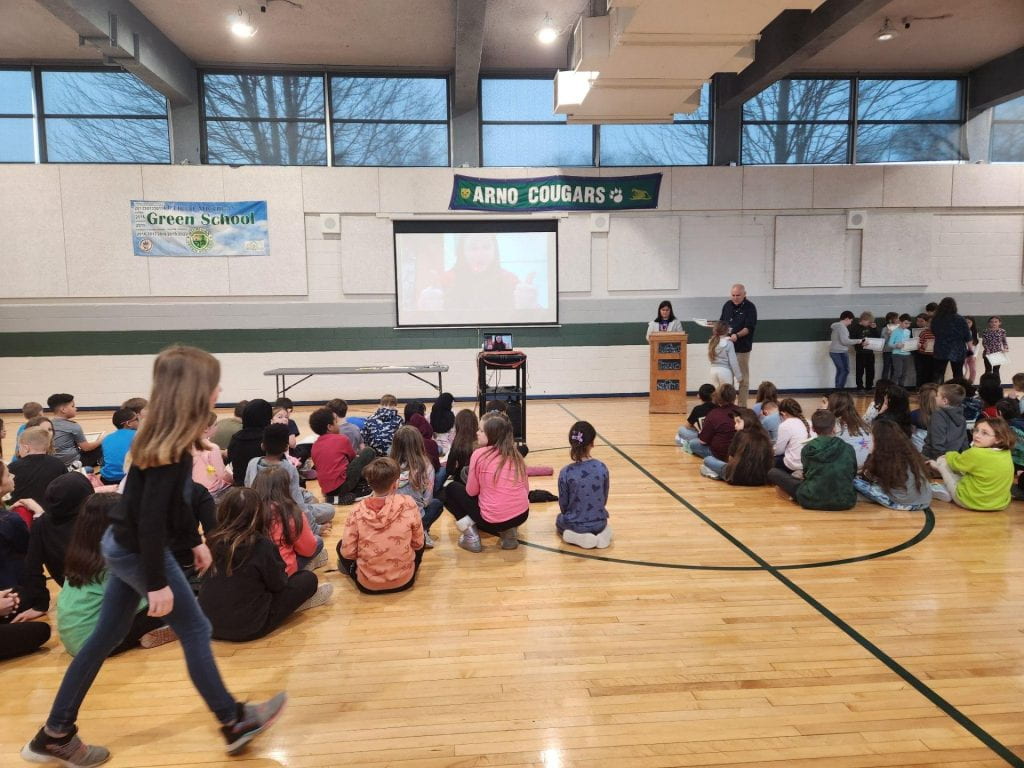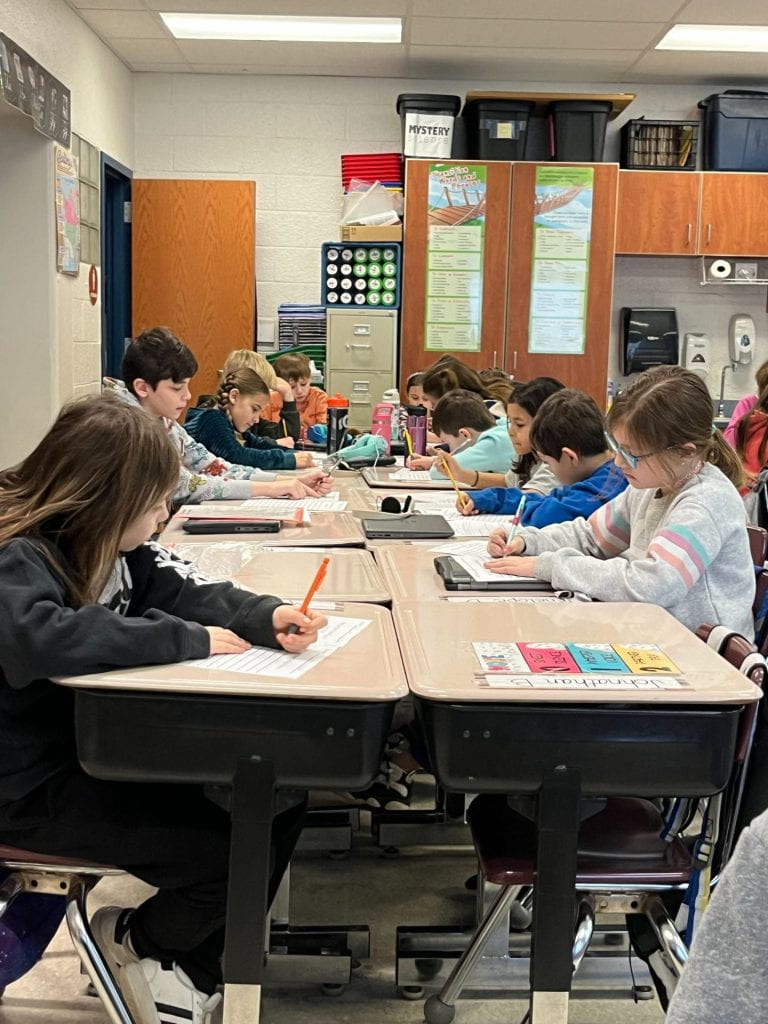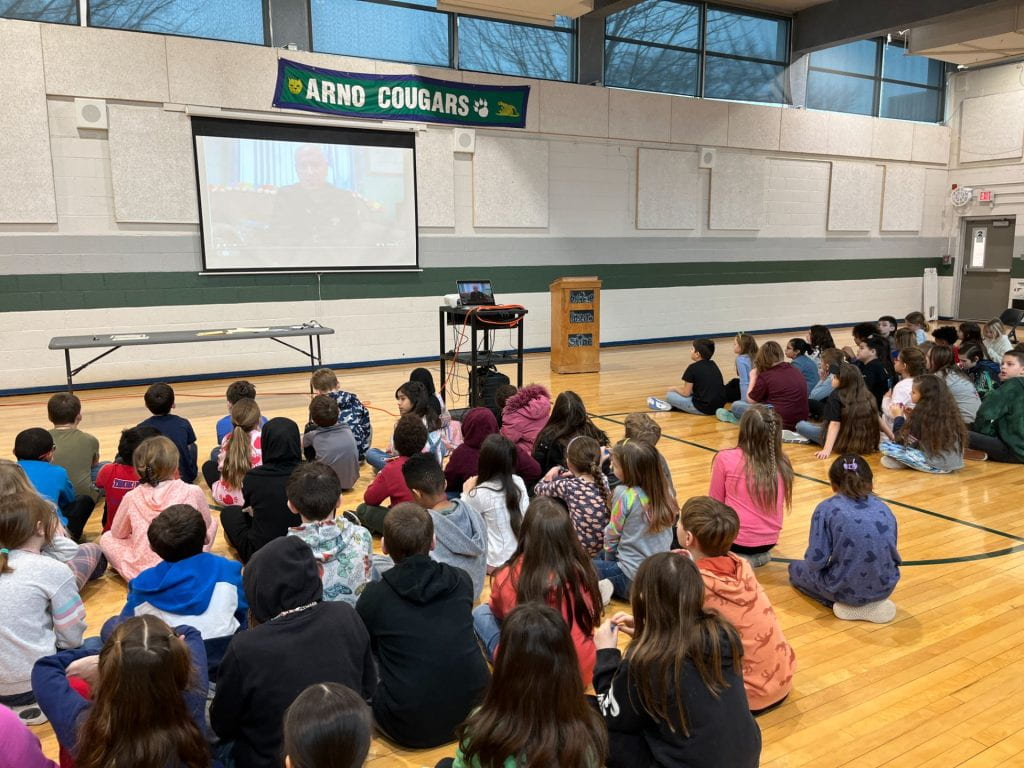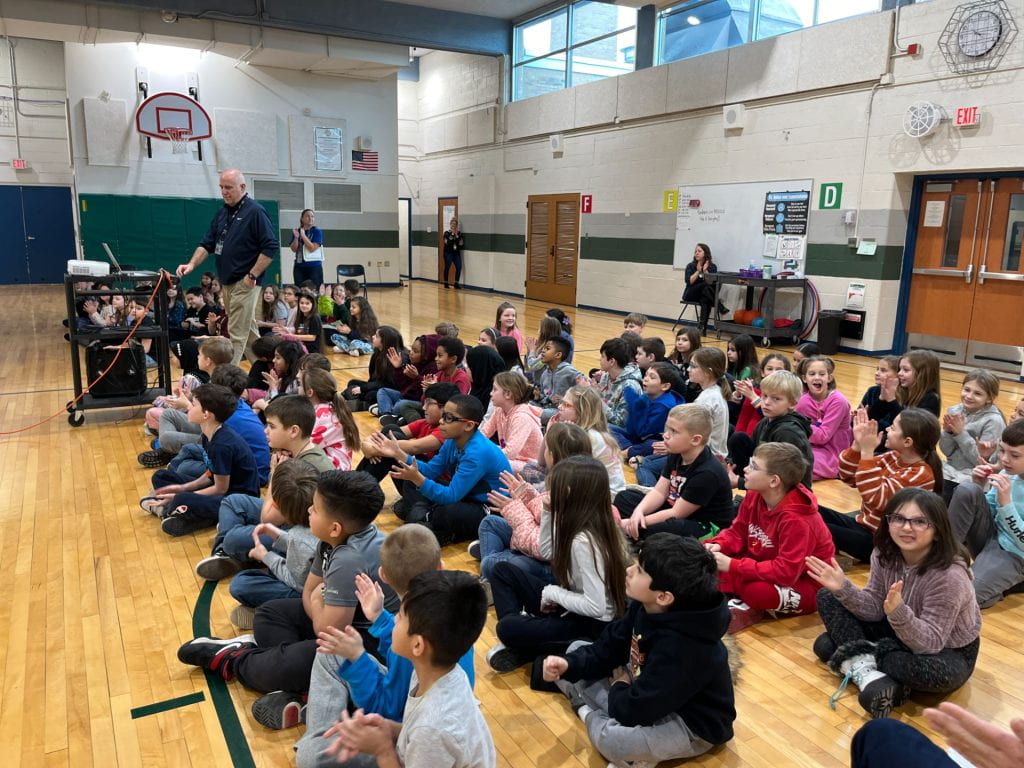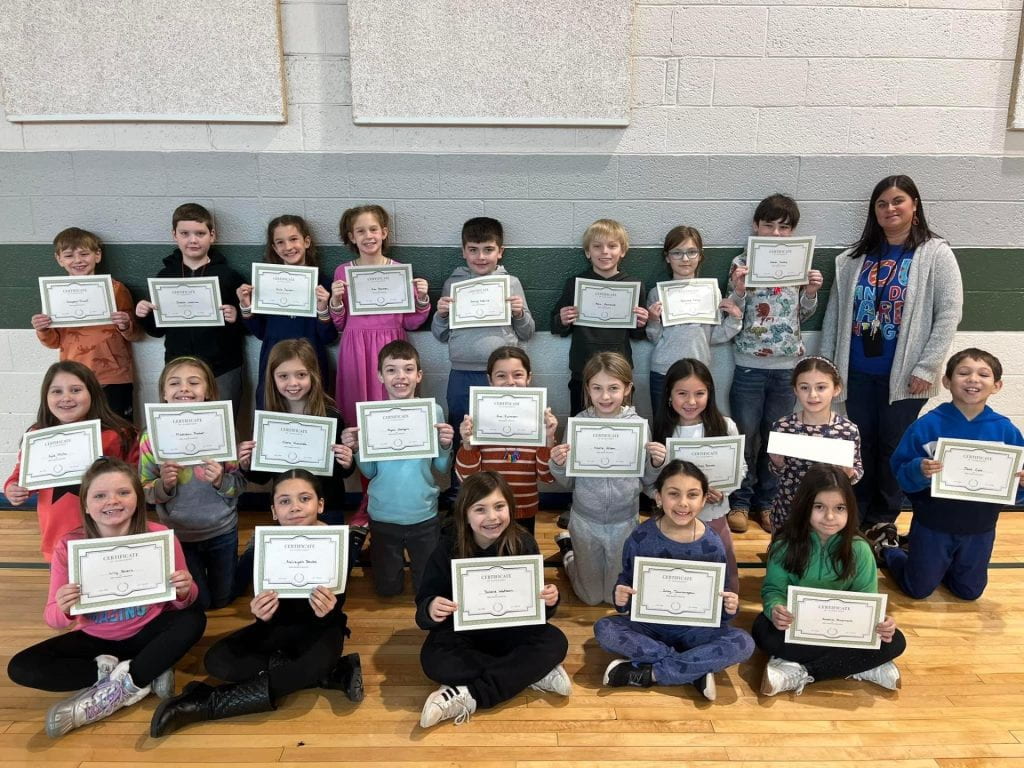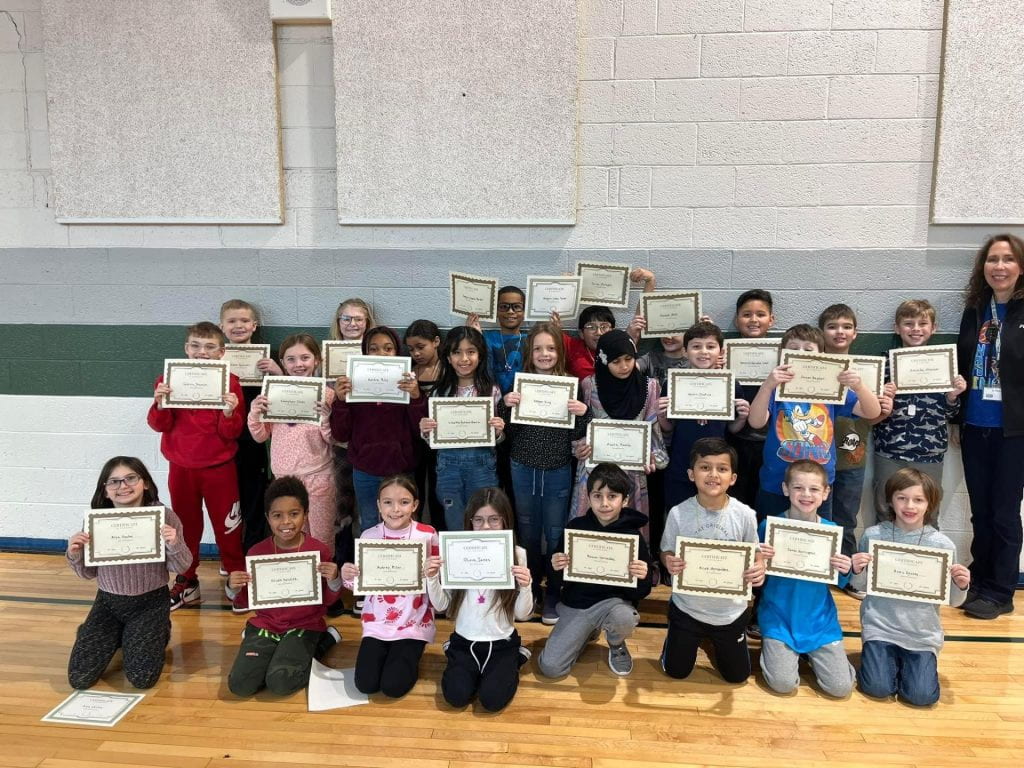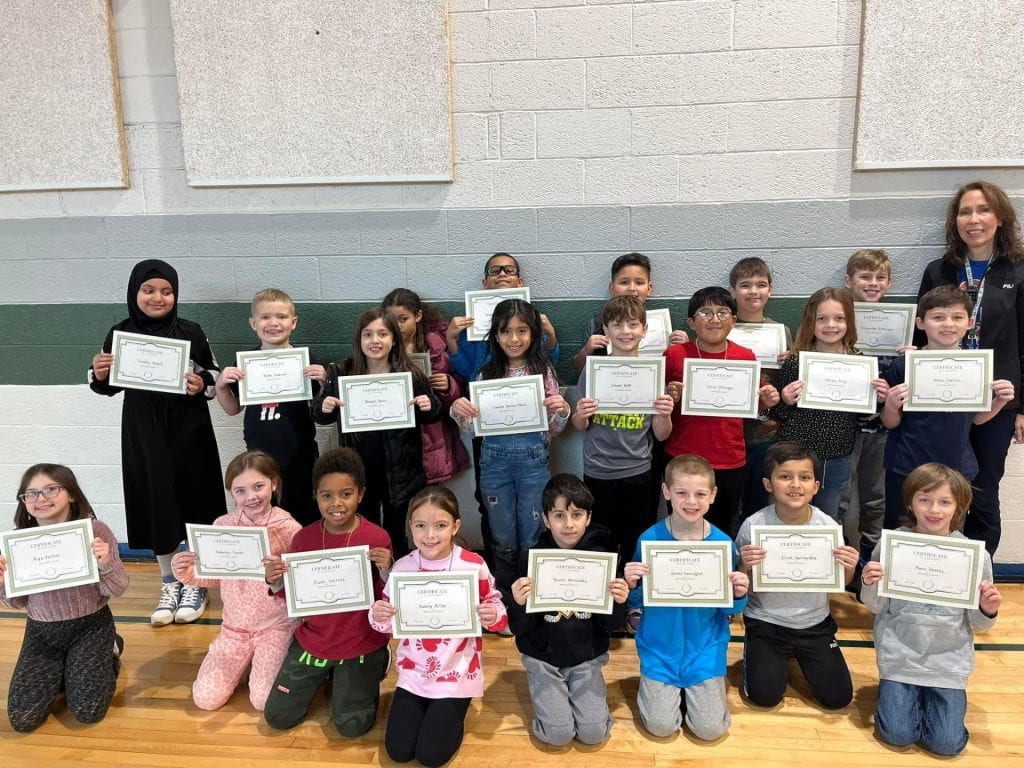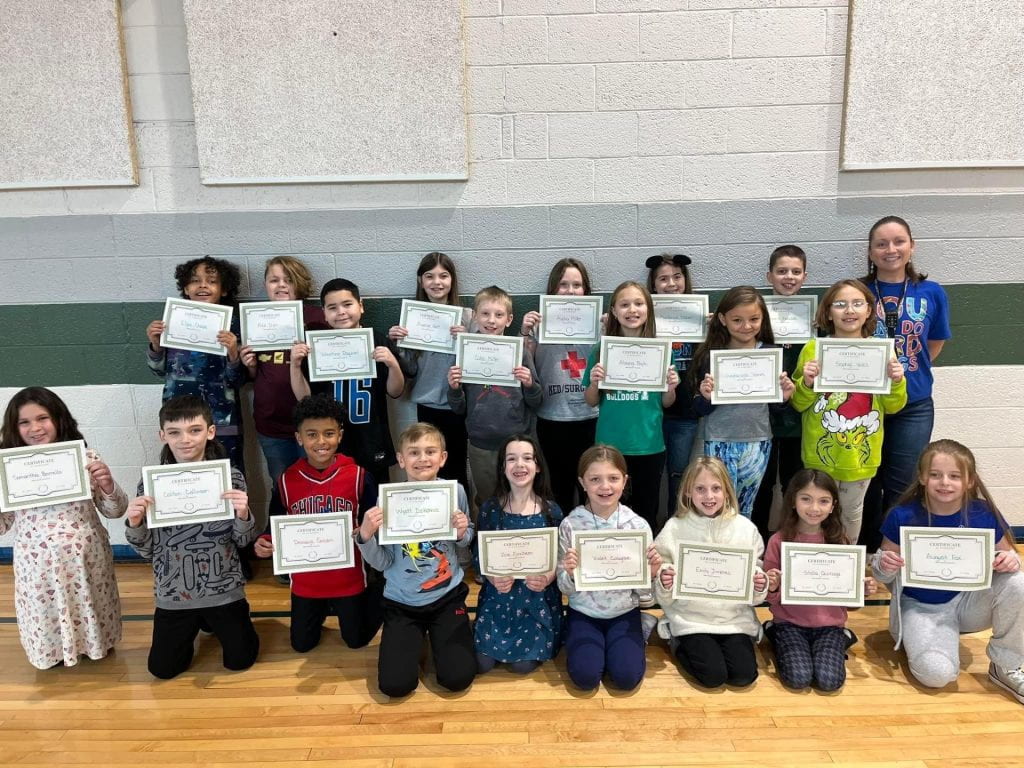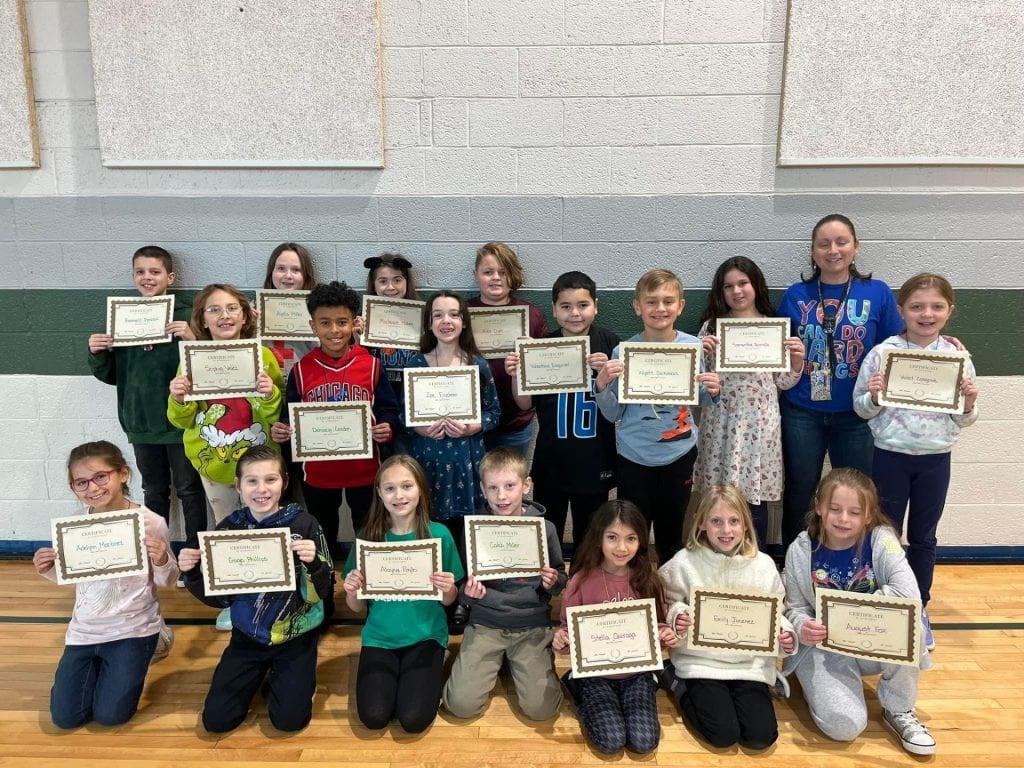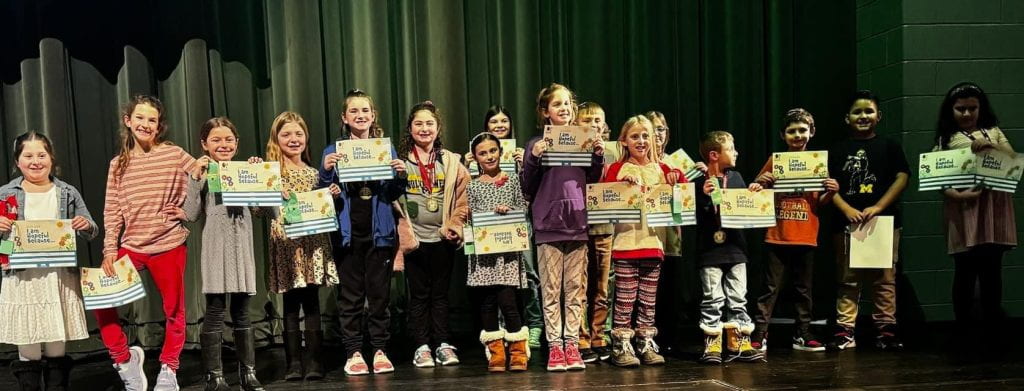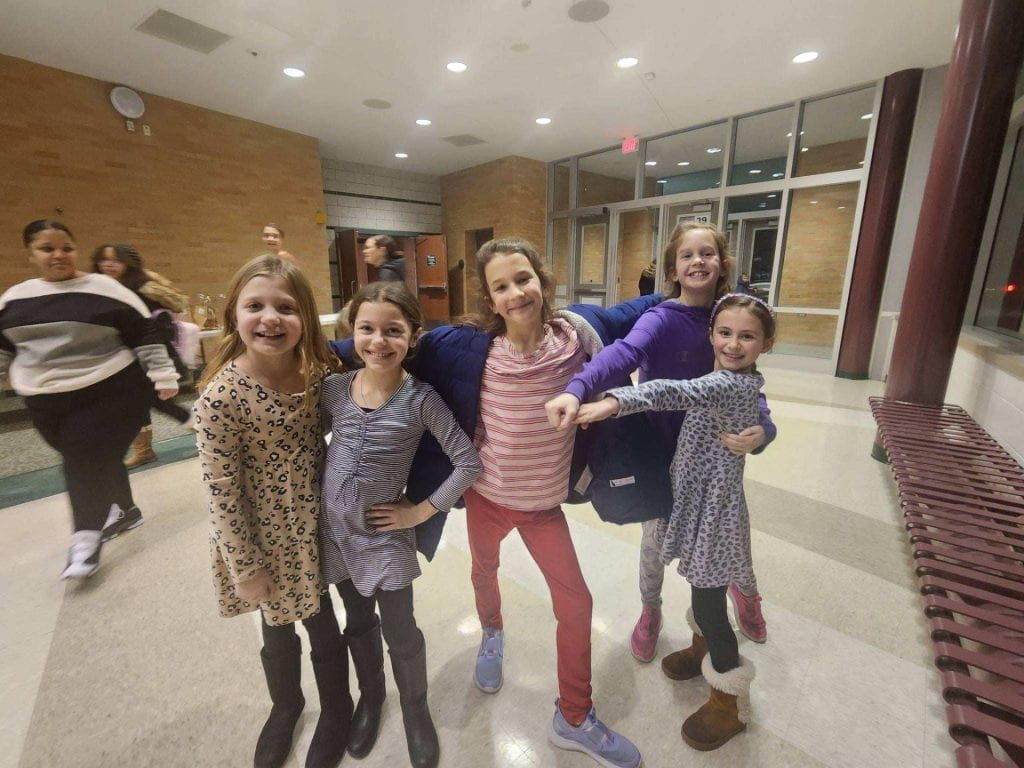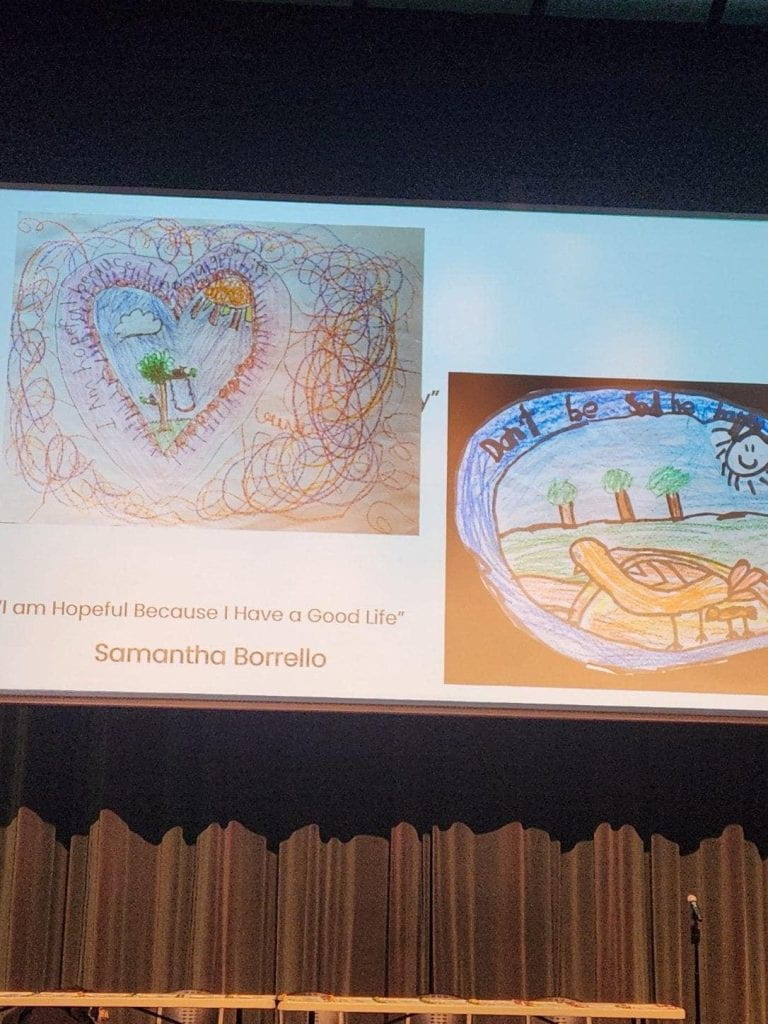Coming Soon…
Monday, February 5th
- Smencil Sale
- Guyot Special Class: Media Technology (Computers)
- Kalis Special Class: Media Literature (Library)
- Warneck Special Class: Music
Tuesday, February 6th
- Readworks article due (“Famous Inventors – Thomas Edison” )
- Guyot Special Class: Art
- Kalis Special Class: Music
- Warneck Special Class: Physical Education (Gym)
Wednesday, February 7th
- Guyot Special Class: Media Literature (Library)
- Kalis Special Class: Physical Education (Gym)
- Warneck Special Class: Media Technology (Computers)
Thursday, February 8th
- American Heart Association Assembly
- MSTEP Homework Packet #8 due 2/8/24
- MSTEP Vocabulary Week 11 Quiz
- Vocabulary Quiz (Young Thomas Edison)
- Comprehension Quiz (Young Thomas Edison)
- Guyot Special Class: Music
- Kalis Special Class: Media Technology (Computers)
- Warneck Special Class: Art
Friday, February 9th
- No School (Staff Professional Development)
English Language Arts
In third grade we will use an anchor text for 2 weeks. In the first week, students will use the text to build vocabulary knowledge as well as utilize comprehension strategies to understand the text. Both vocabulary knowledge and understanding of the text will be assessed on the first Friday. The second week will focus on spelling, grammar, and writing skills. Spelling words and grammar will be assessed on the second Friday of our story. In addition, students will explore phonetic patterns each week. Please note that vocabulary words are listed in the graphic below.
**MSTEP Homework Packet**
This homework assignment was sent home Friday, February 2nd. Please stress the skills of reading the passages and looking back in the story to answer the questions. Thank you!
MSTEP Homework Packet #8 due 2/8/24
**Edmentum**
Third grade’s focus is earning trophies as students navigate their individualized learning path. Students are encouraged to earn 2 trophies in the area of reading, 1 trophy in math, and 1 trophy in language arts. Trophies are earned by completing a Progress Check with 80% or higher. Students know how to check if they met their trophy goal.
Math Chapter 11: Understand Fraction Equivalence and Comparison
In this chapter, your student is learning about fraction equivalence and comparison. The lessons address how to model and write equivalent fractions, as well as how to compare fractions using a variety of strategies. The vocabulary words for the chapter are: equivalent and equivalent fractions. Build your student’s understanding of fraction equivalence and comparison during your next baking session!
• Pull out your recipe book and head to the kitchen! Choose recipes that include different fractions so your student can compare them. Try changing some of the fractions to familiarize your student with a variety of fractions. For example, you can change 1 cup to 4/4 cup, or 2/3 teaspoon to 4/6 teaspoon to spice up the recipe!
• Invite your student to be your recipe reader. Ask, “What is an equivalent fraction for 1/2 cup?” Encourage your student to use a number line or models to find an equivalent fraction. Then, ask your student to find equivalent fractions for the whole numbers in the recipe. For example, 2 cups can also be 6/3 cups!
• Then, pick two items that share the same denominator (bottom number of a fraction). Point out the two items, such as sugar and flour, and ask, “Do I need more sugar or more flour in this recipe?” Encourage your student to use fraction strips or a number line to answer the question. Then, find two items that share the same numerator (top number of a fraction). Ask, “Do I need more [first item] or more [second item]?”. Encourage your student to use a number line to answer the question.
• Next, ask your student to look at the recipe and compare fractions with different numerators and denominators. Order three recipe items (with fractions) from least to greatest. Your student can use fraction strips or number lines to order the fractions.
By the end of this chapter, your student should feel confident with the learning targets and success criteria on the next page. Encourage your student to think of other contexts for comparing fractions, such as the distances between two places (e.g., 1/4 mile vs. 1/2 mile).
Have a great time at your next bake-off!
February Smencil Sale
Elementary School Code of Conduct
Just a reminder regarding Arno’s Code of Conduct. We’ve experienced an uptick in dress code infractions. If you could please take a moment to read over this information with your child, we would greatly appreciate it.
STUDENT DRESS CODE
The staff of the Elementary schools expect all students to be neatly and appropriately dressed and groomed at all times while in school and at all school functions. Clothing and general appearance of all students shall be in keeping with the intent of this policy. The spirit of the Allen Park dress and grooming regulations are best reflected in the following two excerpts from the Allen Park Board of Education policy:
“Students are expected to determine their patterns of dress and grooming, provided that such
dress and grooming do not interfere with the health and safety of themselves or others and does
not interfere with the educational process of the school.”
In order to assist students and parents to comply with this provision, the following guidelines have been developed. The school administrator and staff will uphold the following regulations:
1. Clothing should not be so torn or so loose fitting as to be inappropriate or immodest.
2. Students are not to wear items of clothing which have obscene or vulgar statements or
pictures, which promote alcohol, tobacco, or illegal substances. Shirts that convey a
negative attitude should not be worn to school. Also, students should not wear clothing
that promotes violence or fighting; such as “wrestling t-shirts”.
3. Shoes or footwear must be worn at all times. Sandals must be worn with socks. Flip-flops do
not make good shoes for children to wear to school, especially for gym and recess.
4. Hats are not to be worn in the building and must be kept in the student’s
cubby or locker during the school day.
5. Makeup and all other cosmetic products are prohibited. This includes fake fingernails and
“tattoos”.
6. No bare midriffs, “fishnet” shirts, bare backs, halter tops, spandex, spaghetti straps, low
cut or loose fitting tank shirts or transparent clothing are permitted at any time. However,
sleeveless tops that fit tightly around both the shoulder and the neck will be permitted. In
general, school clothing should be age appropriate and modest.
7. Shorts, skirts, and dresses must be at least fingertip length when one’s arms are extended
straight at one’s sides.
8. Coats and jackets, and other outerwear should not be worn in class.
Exceptions to the above for “special” days may be declared by the administration.
These guidelines are offered as general statements so that students and parents can select and purchase clothing appropriate to the school environment. As in most other things, good judgment
and common sense are the ultimate standards.
Students who arrive at school inappropriately dressed will be referred to the principal and asked to remedy the problem. This may involve being sent home to change a particular article of clothing.
Valentine’s Day
On Wednesday, February 14th, the third grade classes will be having a little celebration. Students may bring in valentine cards for their classroom.
- Mrs. Guyot’s Class: 30 students
- Mrs. Kalis’s Class: 30 students
- Mrs. Warneck’s Class: 29 students
It is best to just have your child write his/her name on each card instead of including who the card is for. This makes for a speedier delivery in class.
We are also asking for donations of juice pouches and Krispy Kreme heart-shaped donuts. If you would be willing to donate either of these items, please click on the signup link: https://www.signupgenius.com/go/10C0D4EAAAC2EA4F94-valentines
